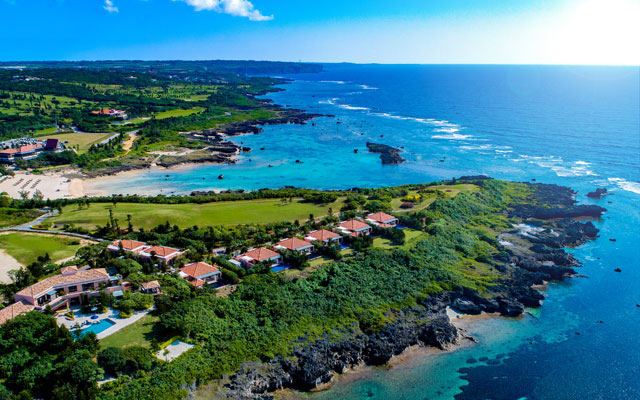Some 300km south of Okinawa, a small island known mainly to the Japanese is rising up on the maps of foreign tourists, buoyed by the arrival of its first international airport, international branded hotel and cruise passengers.
Miyako Island, nearly 160km2 in size, is the largest of six islands administered by the city of Miyakojima. This January, neighbouring Irabu Island welcomed what’s believed to be the first international branded hotel in Miyakojima with the opening of Iraph Sui, a Luxury Collection Hotel by Marriott.
And in March, a new international airport opened on Shimoji Island (connected by bridge to Miyako Island), set to receive its first inbound scheduled service when HK Express commences flights there in July.

Iraph Sui is expecting a more international mix of guests with HK Express and Korean Air chartering flights to the new airport. The domestic to international guest ratio is currently 9:1, according to Yoshiko Sato – director of marketing at Iraph Sui, a Luxury Hotel, Okinawa and Suiran, a Luxury Collection Hotel, Kyoto.
Meanwhile, the biggest tourist accommodation in the Miyako Islands, Nansei Rakuen Resorts, which offers 1,000 keys across seven brands, sees 97 per cent of demand coming from domestic origins.
Now turning its attention to inbound guests, it marked its first-time participation at ILTM Asia Pacific this year.
While only one foreign airline has been scheduled to service the island thus far, Mio Yamamuro, the resort’s executive managing director, believes that awareness is the big missing link in the island’s international ambitions.
“We don’t see many non-Japanese here – at least not yet. The problem is that international travellers don’t know about the destination and our resort. But through our ILTM appointments, we have been showing off the island and our resort and everyone has been amazed. They never thought there’d be such beautiful beach resorts in Japan.”
What many international travellers also don’t know is that “it’s a quick change in Naha” to get to Miyako Island.
Between Naha and Miyako, there are 13 domestic flights a day, which translates to “more or less one flight every hour”, Yamamuro emphasised. “It is really no hassle to get here for those transiting in Naha.”
Apart from Hong Kong, which will soon get scheduled flights, she remarked that South Korea and Taiwan are also promising due to the easy transfers from Naha. There are seven or eight services connecting each country to the Okinawa airport. The flight from nearby Taiwan to Naha takes only an hour, and the connecting flight to Miyako Island just 55 minutes.
Overall, Yamamuro admitted that Miyako is less inbound ready than some other comparable destinations such as Ishigaki, Okinawa.
“We are probably not as international as other beach destinations in Japan. The lack of foreign language signage, not just on our property but also around town, is a challenge. But this is something we have been coping with. As more cruises come in, we’ve been adding more signage in Chinese. We should be ready to cater to guests of different nationalities.” Yamamuro noted.
However, what sets Miyako Island apart from Okinawa beach haunts like Ishigaki is the ease of exploring the small island. “It’s just three hours to drive around the island and up to two hours to get from the airport to tourist resorts. For our guests, it’s 15 minutes to arrive from the domestic airport and 45 minutes from the international airport,” she shared.
The growing cruising market and 2020 Tokyo Olympics are also presenting new opportunities for Miyakojima properties.
Yamamuro said: “We see a lot of non-staying guests who arrive on cruises to dine at our 22 restaurants. We want to convert them into staying guests… There will be a lot of tourists coming to watch the games in Tokyo next year. We see a good opportunity to have them fly down to enjoy a couple of days on the island before heading back home.”
At Iraph Sui, Sato expects there could also be some “indirect business opportunities” materialising from the Tokyo Olympics. With the games affecting the commute in Tokyo, some companies might allow employees to work remotely, hence raising business opportunities for the hotel.




















